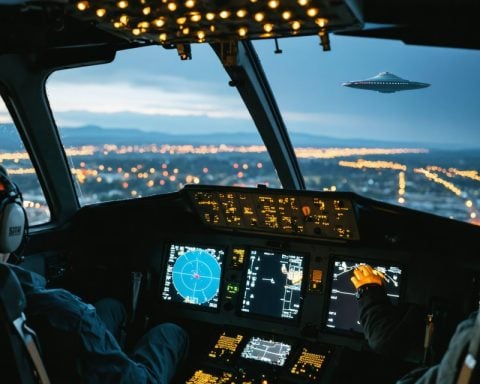Drones, once a fascination limited to hobbyists, have transcended into transformative agents in various sectors. Traditionally used for aerial photography and recreational purposes, they are now poised to revolutionize our daily lives more than ever before.
Emerging Trends: With rapid advancements in technology, drones are becoming central to groundbreaking changes in agriculture, healthcare, and delivery services. Take, for example, drone swarms being piloted to manage crop health, apply precision fertilization, and even pollinate plants. This integration of robotics into farming aims to increase efficiency and yield, heralding a new era of smart agriculture.
In healthcare, drones are increasingly deployed to deliver critical medical supplies in hard-to-reach areas. Companies like Zipline have already demonstrated the feasibility of using drones for life-saving blood and vaccine deliveries in remote regions, bypassing traditional logistical challenges.
Urban Air Mobility: The skies are set to become busier with the advent of aerial taxi services. Leveraging drone technology, companies are exploring pilotless air taxis as a solution to urban traffic woes. These autonomous flying vehicles could soon be a regular feature in cityscapes, offering a faster, pollution-free mode of transportation.
Yet, with these advances come challenges such as privacy concerns, regulatory frameworks, and airspace management. As the pace of drone innovation continues to soar, the future calls for a concerted effort in crafting policies that balance progress with ethical considerations. The drone evolution is more than a technological leap; it’s an unfolding saga reshaping the very fabric of modern society.
The Future of Drones: Innovations and Implications Explored
The rise of drone technology marks a pivotal moment in modern engineering and urban planning. Here, we delve deeper into the expanding potential of drones and how they are set to redefine various sectors.
Innovations in Drone Technology
Drone technology is experiencing a wave of incremental innovations that are transforming how various industries operate. One of the most promising advancements is the development of drone automation through AI. This innovation allows for autonomous decision-making, enhancing capabilities in complex tasks such as crowd monitoring, environmental mapping, and precision agriculture.
Furthermore, advancements in battery technology are extending flight durations and ranges. These improvements are pivotal for applications like long-distance deliveries and continuous aerial monitoring, enhancing both practicality and efficiency.
The Growing Role of Drones in Urban Air Mobility
The concept of aerial mobility is gaining traction, with companies racing to launch pilotless air taxis. The industry envisions a revolution where commuters bypass road traffic by using vertical lift aircraft. As cities grow denser, these aerial taxis could emerge as a sustainable alternative, reducing congestion and lowering carbon emissions.
Security and Regulation: Addressing the Challenges
With the rapid adoption of drones, security and regulation remain paramount. One major concern is the potential misuse of drones for espionage or unauthorized surveillance. Consequently, strengthening drone cybersecurity has become essential to protect sensitive data and ensure operational integrity.
Regulatory advancements are equally crucial. As drones fill the skies, the establishment of coherent airspace management systems is necessary to prevent collisions and ensure safe operations across regions. Policymakers globally are tasked with creating frameworks that allow innovation while safeguarding public interests.
Drones in Healthcare: Saving Lives in New Frontiers
The healthcare sector continues to pioneer the use of drones for life-saving missions. From delivering organs for transplantation to offering rapid humanitarian relief in disaster-stricken areas, drones possess unparalleled potential in crisis response. The ability to quickly dispatch medical supplies to remote and inaccessible regions highlights drones’ life-saving capabilities during emergencies.
Sustainability and Environmental Impact
Drone technology also holds promise for sustainable development initiatives. Equipped with high-resolution cameras and sensors, drones can oversee vast environmental projects, track wildlife, and evaluate the health of ecosystems. Such environmental monitoring is integral for research and conservation efforts.
Moreover, the shift toward electric-powered drones signifies a commitment to reducing the carbon footprint associated with transportation and logistics.
Market Analysis and Future Predictions
The drone market is expanding rapidly, with projections indicating significant growth in sectors like agriculture, logistics, and personal transport. As technological barriers decline and regulatory landscapes evolve, an increase in commercial drone applications is anticipated.
For companies looking to leverage drone technology, the emphasis should now be on integrating advanced AI capabilities and enhancing energy efficiency. This strategic approach can maximize the benefits of this transformative technology across business operations.
In conclusion, drones represent not just a technological innovation but a cornerstone for future infrastructural developments. As the industry evolves, continuous efforts in innovation, ethical regulations, and sustainability will shape the potential impact of drones on society. For more insights into technology advancements, visit TechRadar.



















